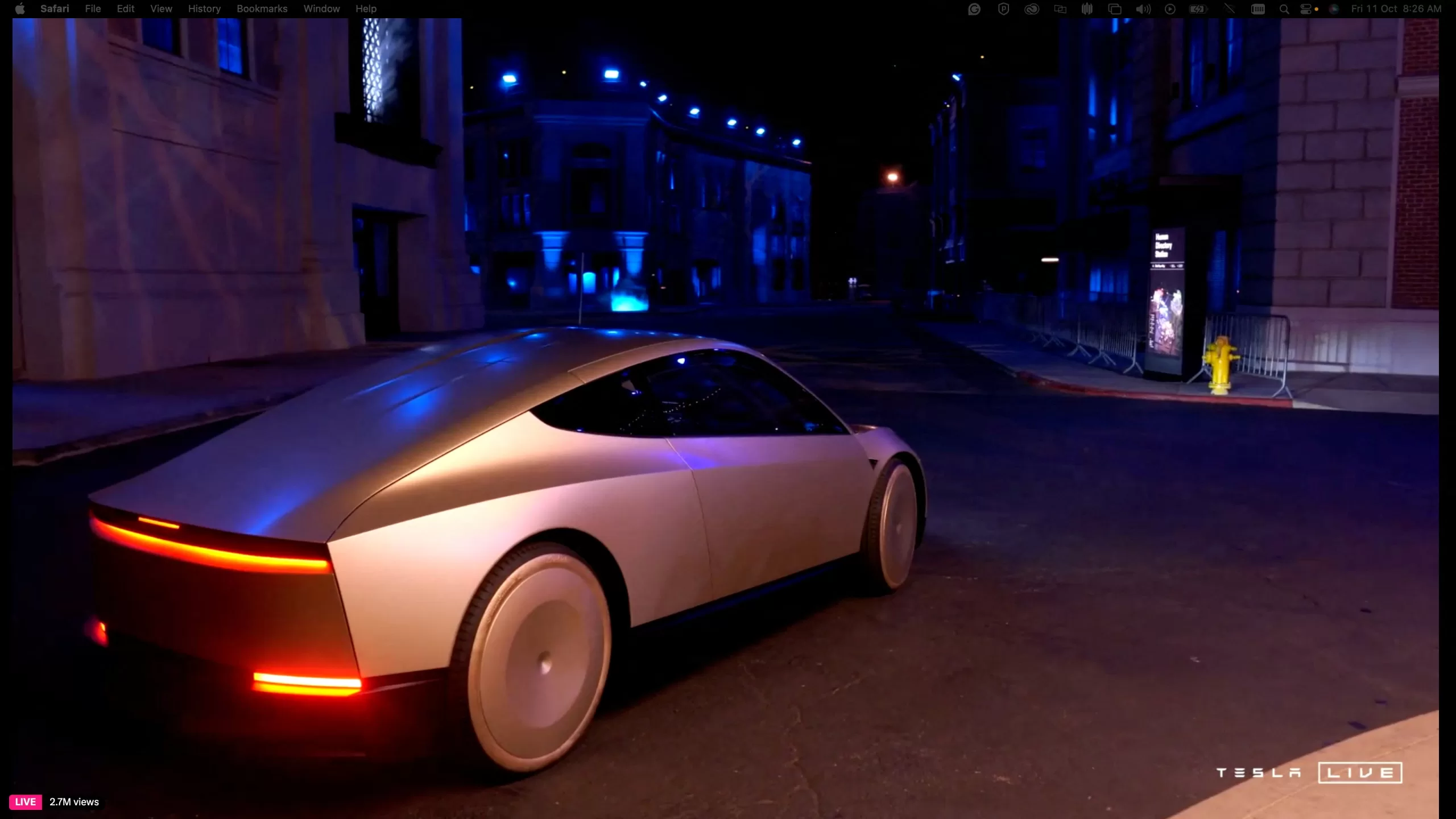Tesla CEO Musk unveils two-door robotaxi | Reuters
Tesla CEO Elon Musk revealed the much-anticipated two-door robotaxi at a high-profile event in Los Angeles on October 10, 2024. The event, held at Warner Bros studio, was packed with investors, analysts, and Tesla enthusiasts. Musk, known for his ambitious promises and innovative breakthroughs, arrived on stage in the futuristic vehicle called “Cybercab.” The robotaxi, which has no steering wheel or pedals, features gull-wing doors, marking a significant step toward fully autonomous vehicles.
Musk announced that the production of the Cybercab will begin in 2026, with the car priced at less than $30,000. He reiterated his long-standing commitment to creating a future where autonomous cars would drive Tesla’s growth. The Cybercab, designed to operate without human intervention, relies solely on cameras and artificial intelligence (AI), unlike other self-driving technologies that use expensive hardware like lidar. According to Musk, this design will keep costs low, making the vehicles more accessible.
“The autonomous future is here,” Musk declared, emphasizing that Tesla is ahead of the curve with its autonomous fleet. During the event, Musk highlighted that there were 50 fully autonomous cars present, including the Model Ys and the newly unveiled Cybercab. He also mentioned that the operating cost of the Cybercab would be just 20 cents per mile, a remarkable feat compared to current transportation costs. The vehicle will use inductive chargers, eliminating the need for traditional charging plugs.
Beyond the robotaxi, Musk also revealed a larger autonomous vehicle called the “Robovan.” This vehicle is designed to transport up to 20 passengers, targeting shared mobility services and group transportation. Additionally, Musk showcased Tesla’s humanoid robot, Optimus, further pushing the boundaries of what Tesla has to offer in terms of robotics and AI.
Musk’s vision for Tesla’s robotaxi fleet goes beyond selling individual cars. He plans to operate a network of self-driving taxis that passengers can hail through an app. This plan includes allowing Tesla owners to list their cars as robotaxis when not in use, providing them with an opportunity to earn money. The unveiling event was titled “We, Robot,” likely referencing the famous “I, Robot” science-fiction stories by Isaac Asimov, and underscored Musk’s assertion that Tesla is not just a car company but an AI robotics company.
Despite the excitement surrounding the event, some investors left with mixed feelings. While the presentation was visually impressive and forward-looking, Musk did not provide definitive timelines for when these autonomous vehicles would be fully operational. Dennis Dick, an equity trader at Triple D Trading, expressed his disappointment, stating, “Everything looks cool, but not much in terms of timelines. I think the market wanted more definitive timelines.”
Musk’s ambitious timeline for robotaxis is not new. Back in 2019, he confidently predicted that Tesla would have operational robotaxis by 2020. However, that target was missed, and this time, Musk is focusing all his efforts on making autonomous vehicles a reality. The decision to prioritize robotaxis comes after Tesla shelved plans for a smaller, cheaper electric car, which was considered vital to counter slowing demand for electric vehicles (EVs).
Tesla has faced several challenges recently, including slowing EV demand and fierce competition. Despite offering incentives to attract buyers, Tesla is on track to experience its first-ever drop in deliveries this year. Aggressive price cuts, introduced to offset high interest rates, have further squeezed the company’s profit margins. Additionally, regulatory hurdles and technological challenges have slowed down the progress of autonomous driving across the industry.
Other companies in the robotaxi market, such as General Motors’ Cruise, Amazon’s Zoox, and Chinese firms like WeRide, have also struggled to overcome these obstacles. Many have invested billions of dollars into developing autonomous technology, only to face setbacks and financial losses. Some competitors have even been forced to shut down their robotaxi projects entirely. However, Musk remains confident that Tesla’s reliance on cameras and AI, rather than expensive hardware like lidar, will allow the company to succeed where others have failed.
Tesla’s Full Self-Driving (FSD) technology, which is essential for the robotaxi program, has also come under regulatory scrutiny. The technology, which currently requires drivers to remain alert while the car operates autonomously, has been linked to at least two fatal accidents. Legal and regulatory challenges continue to pose risks for Tesla’s autonomous driving ambitions.
Despite these hurdles, Musk’s presentation showed that Tesla is pushing forward with its vision for an autonomous future. The excitement generated by the robotaxi reveal is palpable across social media, with fans and enthusiasts sharing screenshots of the event invites and speculating on what could come next.
While the road to fully autonomous vehicles may still be long, Musk’s determination to transform Tesla from an automaker into an AI and robotics powerhouse remains unwavering. Investors will be closely watching Tesla’s progress, particularly as production of the Cybercab approaches in 2026. Whether Tesla can overcome the technological, regulatory, and market challenges to make autonomous robotaxis a reality remains to be seen, but one thing is certain—Elon Musk continues to push the boundaries of innovation.
#TeslaRobotaxi #AutonomousVehicles #ElonMusk #FutureOfTransport #AIRevolution
